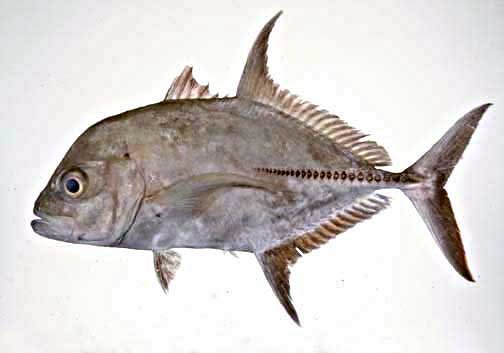|
TRANSLATIONS
Next page in the glyph dictionary is relevant for Te Pei:
The kahi glyph type has the mark of an upside down henua ora too, or expressed in another way, like the 'stem' and 'leaf' of poporo:
The poporo sign has at its top a separate wedge which is absent in kahi. Possibly the Y-sign at the end of the 'stem' means '1' in kahi, but '2' in poporo and henua. I have earlier noticed the resemblance between the front of kahi and the bottom of henua ora and therefore included among the henua ora glyphs in my catalogue also the kahi fishes. The kahi fish gives us two signs (rising, and poporo) which both seem to say 'not dead - very much alive', a reassurance needed when it is very dark. Te Pei could be alluding to pe'i, and in the rongorongo system pe'i could be designed as a kahi glyph. It should be noted that the midline in kahi is quite unnatural and eyecatching for someone knowing fishes, i.e. it is a deliberate sign to call for attention. I searched in Wikipedia for Caranx cheilio but could not find it. Presumably it is an alternative name for one of the species listed under Caranx, but I could not be sure of which. From briefly studying the species listed I could not avoid noticing how 'upside down' the midline in kahi is drawn. A picture of Caranx lugubris (black jack) makes it clear:
The midline goes from its middle and back and there is no line from its middle frontwards. I chose this picture not only for its clearness but also for two other reasons: It is sooty black (as a fire no longer burning) and the fins at its middle are eye-catching. They look as the fins in some of the glyphs which I have classified as kahi, for instance:
Here we can see that the open mouth generates a sign more corresponding to that in henua ora and poporo - a double wedge. From this evidence I now feel certain I must include as next page in the dictionary information relating to kahi:
|
|||||||||||||||||||||||||||||||||||||

